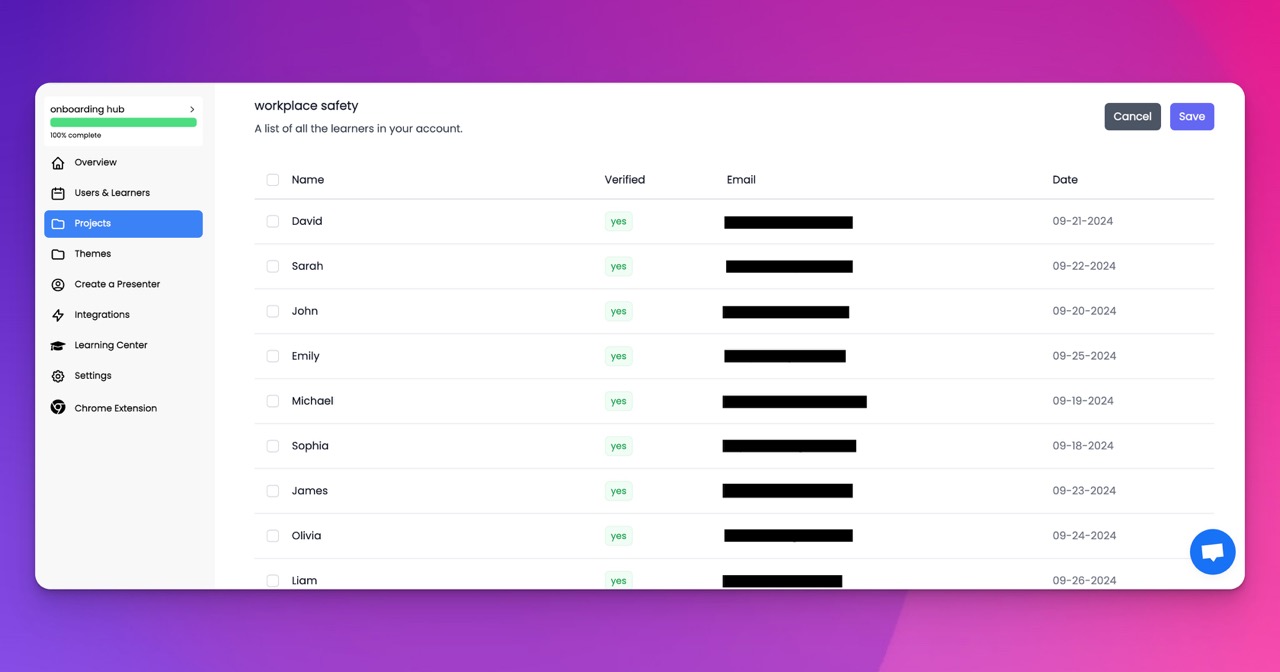🎉 Trainday now integrates with Zendesk and Hubspot 🎉 Trainday now integrates with Zendesk and Hubspot 🎉 Trainday now integrates with Zendesk and Hubspot
🎉 Trainday now integrates with Zendesk and Hubspot
🎉 Trainday now integrates with Zendesk and Hubspot
Contact
Information Technology And Services
"Revolutionizing Learning & Training in the IT Industry: AI-Generated Content vs. Human-Created Videos"
Revolutionizing Learning & Training in the IT Industry: AI-Generated Content vs. Human-Created Videos
In recent years, there has been a significant rise in the integration of artificial intelligence (AI) in various industries. One such area where AI has shown immense potential is in the creation of learning and training videos, particularly in the IT industry. The debate between AI-generated content and human-created videos has sparked curiosity and discussions among professionals in the field. In this blog post, we will explore the benefits and drawbacks of using AI to create learning and training videos and how it has the potential to revolutionize the IT industry.
AI-generated content is undoubtedly transforming the way we learn and train in the IT industry. One of the most significant advantages of AI-generated videos is their ability to be produced at scale and speed. With AI algorithms, it is possible to create a vast number of educational videos in a short amount of time. This is particularly beneficial in the fast-paced world of technology, where new updates and advancements occur regularly. AI-generated videos can be quickly updated to reflect the latest trends and developments, ensuring that learners have access to the most up-to-date information.
Another advantage of AI-generated content is its ability to personalize the learning experience. AI algorithms can analyze the individual learning patterns and preferences of learners, allowing for customized content delivery. This personalization not only enhances engagement but also improves knowledge retention. By tailoring the content to the specific needs of each learner, AI-generated videos can provide a more effective learning experience.
Furthermore, AI-generated content can significantly reduce costs associated with traditional video production. Hiring a team of professionals, such as scriptwriters, videographers, and editors, can be expensive. AI-generated videos eliminate the need for human involvement in the creation process, making it a more cost-effective solution. This cost reduction enables organizations to allocate their resources more efficiently, investing in other areas that can further enhance the learning and training experience.
However, it is essential to acknowledge the limitations of AI-generated content. While AI algorithms are continuously improving, they are still far from perfect. The human touch in video creation provides a level of creativity, empathy, and real-world experience that AI algorithms cannot replicate. Human-created videos have the ability to connect with learners on a deeper emotional level, making the learning experience more relatable and engaging.
Moreover, AI-generated content may lack the ability to adapt to unexpected scenarios or answer complex questions. Human creators can incorporate their expertise, intuition, and critical thinking skills into their videos, making them more dynamic and adaptable. In the IT industry, where problem-solving and critical thinking are crucial, human-created videos can offer a more comprehensive learning experience.
In conclusion, AI-generated content has the potential to revolutionize learning and training in the IT industry. The scalability, speed, personalization, and cost-effectiveness it offers make it an appealing option for organizations looking to provide efficient and up-to-date education. However, it is important to recognize the limitations of AI-generated videos. The human touch and creativity in human-created videos cannot be replicated by AI algorithms and provide a more relatable and engaging learning experience. Therefore, a combination of both AI-generated content and human-created videos may be the key to revolutionizing learning and training in the IT industry, leveraging the benefits of both approaches.
Accelerate Compliance.
Deliver OSHA-Ready Courses Instantly.
Empower your team with data-driven training solutions tailored to your industry's safety standards. Stay compliant, reduce risks, and boost productivity with AI-powered course creation.
